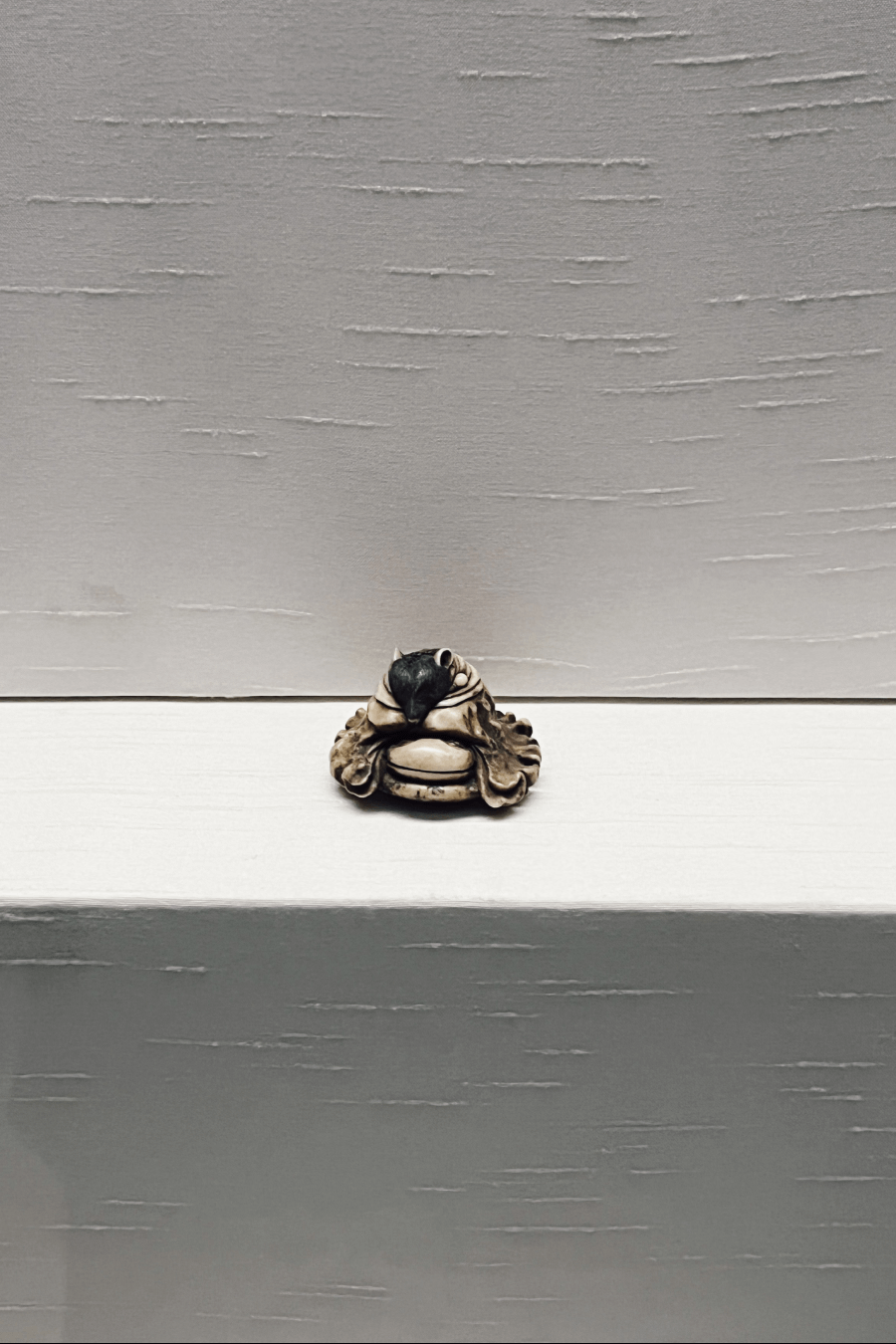
Halfway up the baroque staircase leading to the first floor, a marble Caryatide. Her hand is reached towards me, invitation to touch.
Roman, about AD 140-170. Her fingers, all but the thumb, are discontinued, broken off – like a child’s hand slapped because it desired the forbidden. But time on marble instead of skin on skin. The destructive effect of playing with fire – of being alive – always begetting new imprints of trauma. I want to take her hand but am disallowed by the rules and conventions of visiting a museum. One is not supposed to touch any objects, just look. My fingers remain unslapped.
I’ve come to the wrong room, a dead end in regards to what I search for. I take the stairs back down and look for the South Stairs to lead me to the 5th floor. As if reading my mind, a large poster reads: “Get closer as a Member. Help preserve two million years of history.” But no – it is not preservation but its opposite – the touch – that I’m here for.
All around, objects inviting me into a conversation. But I am too rushed, too determined on my destination to spare them attention that would be sufficient. I prefer elusion over giving false promises.
More ignorance, more non-attention and non-giving, all mine. One room. Second Room. Mummies. No. Go forward I must. I know they are waiting, elsewhere, soon. Fourth floor. Fifth floor. The walls have turned from stone to wood. I mount along these stairs as if along architectural trends. J’arrive.
Here they are, the tiny statuettes: the Japanese carved toggles called Netsuke. Twenty-five in total but the sign tells there are 2,300 exemplars in total in the museum’s collection. The tokens are about 5cm tall, some slightly taller. I could place each one of them in my pocket and make it my companion piece. Were they, once, someone’s companions?
The Netsuke, animal- and human-shaped, are placed on a white terraced shelf, three floors high. Placed about 15cm apart from each other, the tokens form a segregated choir humming mystical wisdom; a shared lamentation over losing one’s carrier. Once, together with their carrier – or, perhaps, the Netsuke themselves were carrying the masters they’d chosen – the tokens formed one half of a symbol. Symbol, from the Greek word symbolon which meant, in the ancient world, half of a knucklebone carried as a token of identity to someone who had the other half. Bone, ivory, wood – the statuettes are carved of earth, just like the animals and humans they represent come from earth.

Stag antler. Yes, I have come for you. Raccoon-dog dressed as a priest, carved of stag antler. It is you I have chosen to be touched by. And I will try, although there is this whiteness and glass separating you from my hand in my pocket. The raccoon-dog token is in seated position, its body enmeshed in a priestly attire so silken it seems to thaw, patiently, over surface. A pond of speckled ivory over the white shelf.
As if overseeing a courtly proceeding, the animals’ majestic pointed black head reaches forward. Its attention is turned inward; it doesn’t wish to talk to me. Not like this, not under these unfavourable circumstances. Perhaps, in another place at another time but both are impossible to reach at this moment. Impossible to reach ever again. The Netsuke have been turned into museum exhibits, into objects to be looked at but no longer touched or listened to. And so they have turned, too, inwards.
Will they ever admit us? The question is beside the point. Damage, once engraved, can’t be erased. No matter how skilled we become at forsaking and altering our own human memories and histories, we remain incapable of entering an enchanted object’s consciousness. In the white space filling the air around the nebulae of statuettes lingers blasphemy so thick no sound can pass through.
And yet – the Netsuke are not strangers to each other. Perhaps, some of them were carved by the same hand; of the same stag horn or walrus ivory or wood. The longer I stand here, the longer becomes the distance between us. The glass solidifies on.
It is time for me to go. I give them one last look. The twenty-five Netsuke, standing in affinity instead of alienation. And me, incapable of forging a touch; touched.


